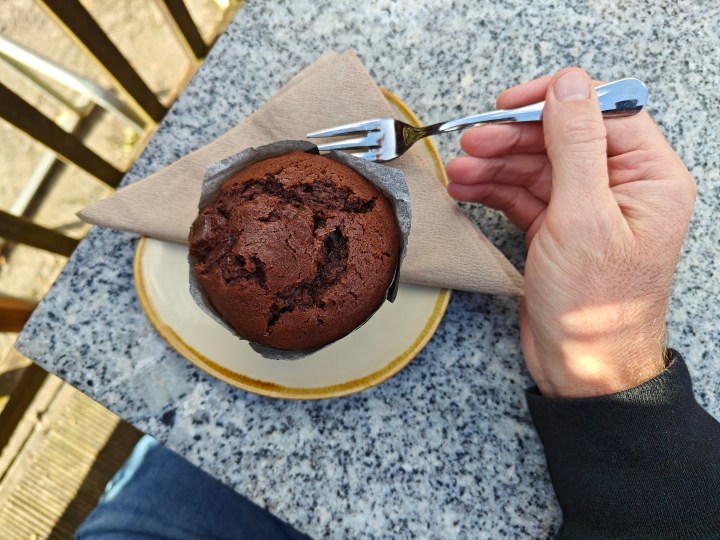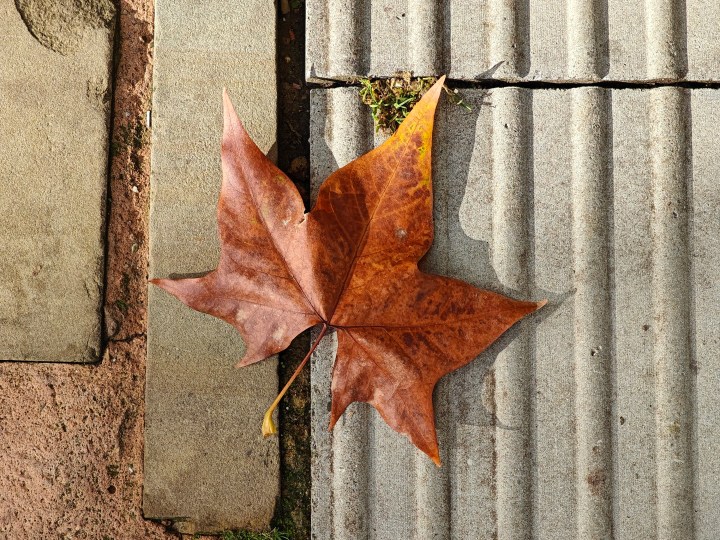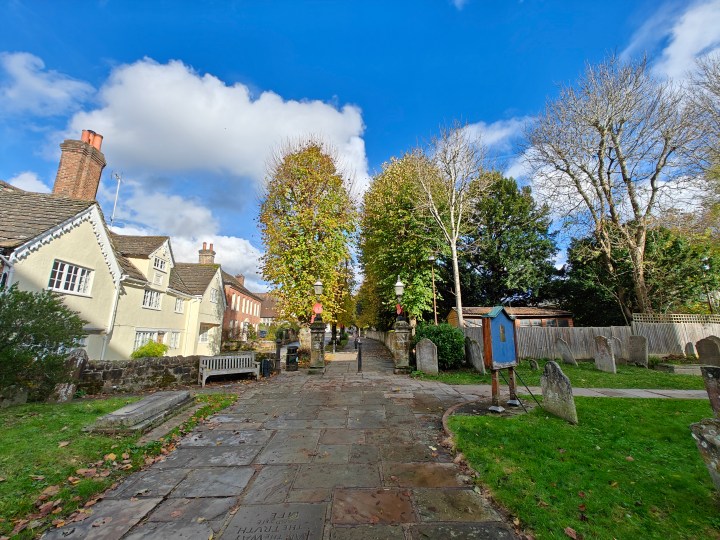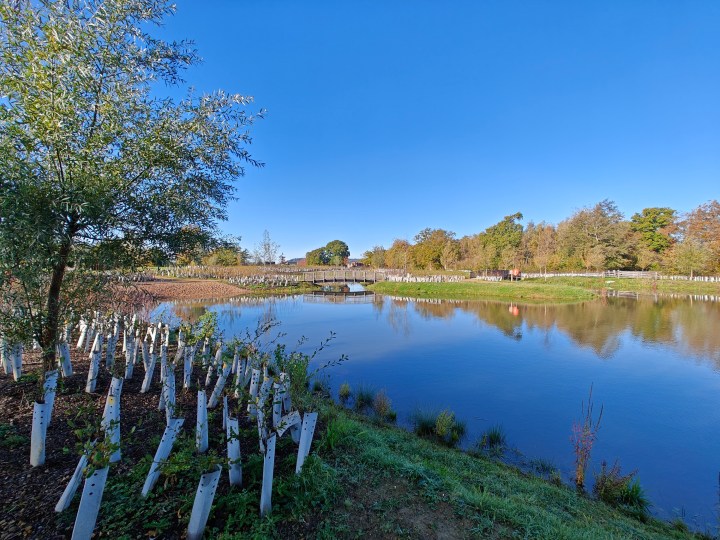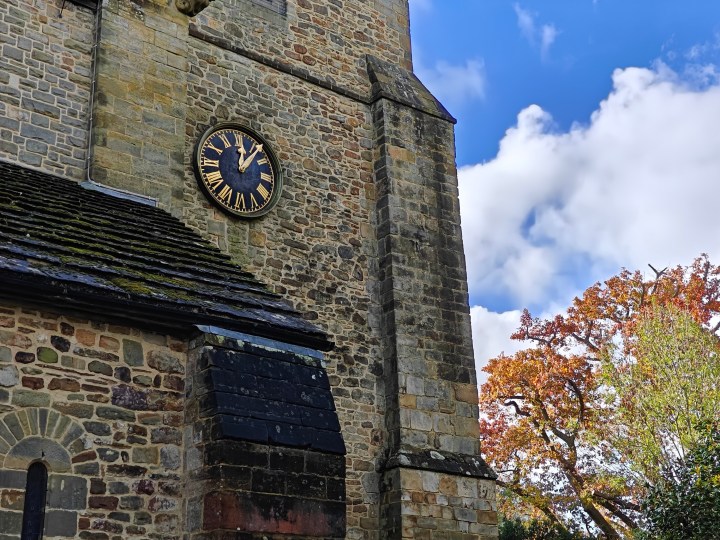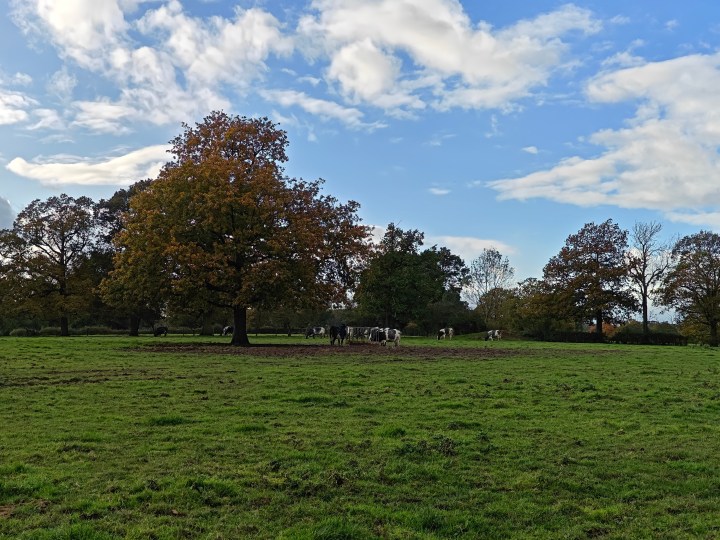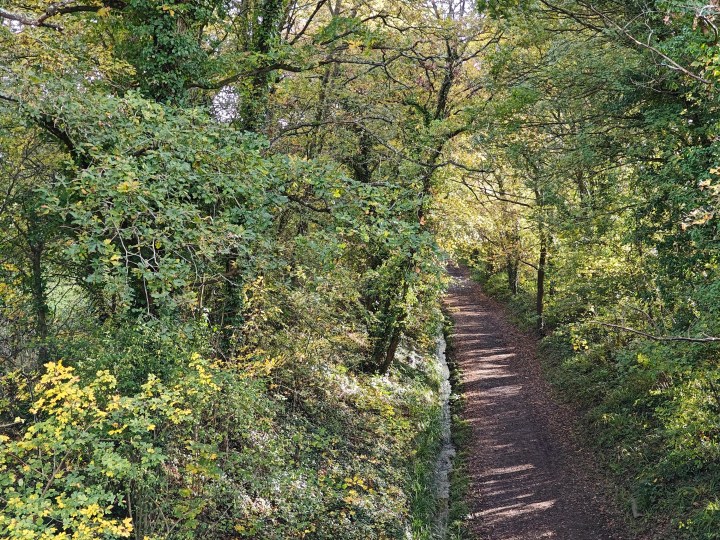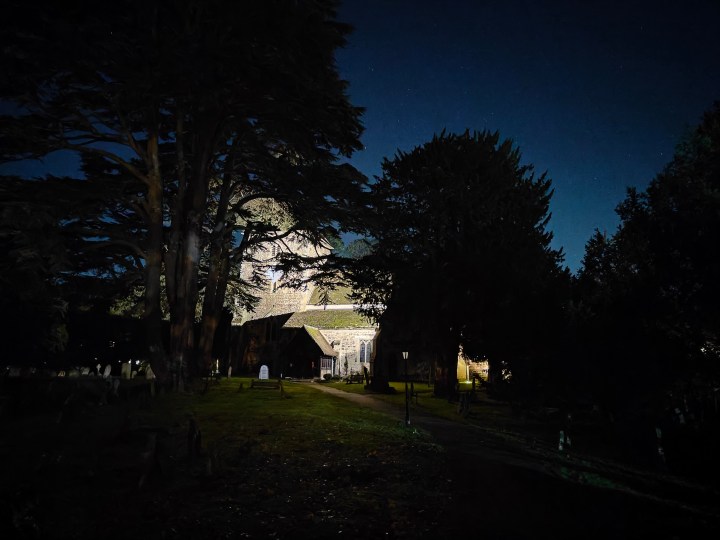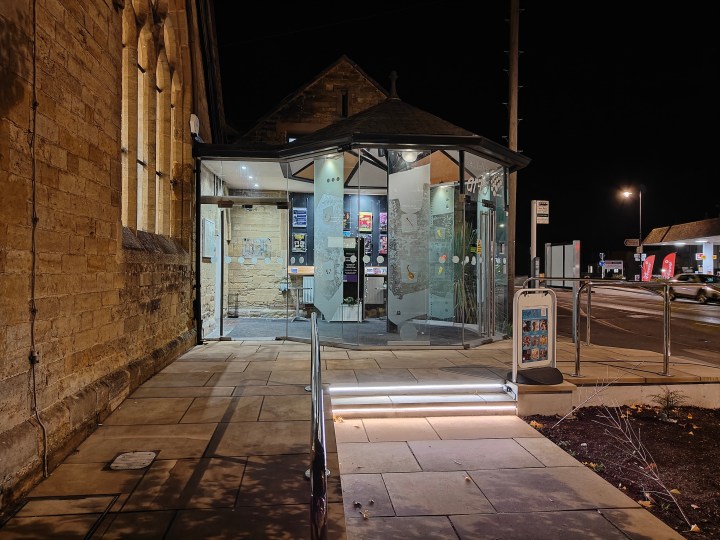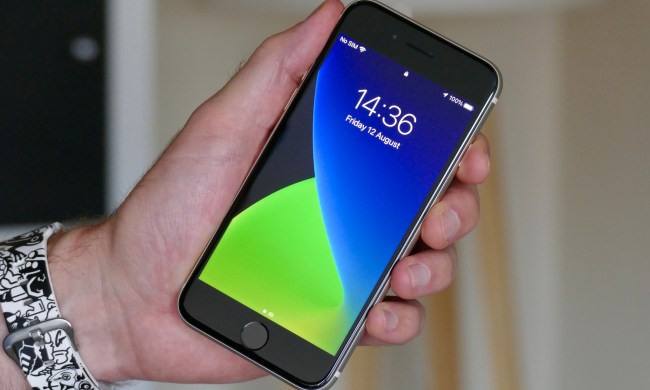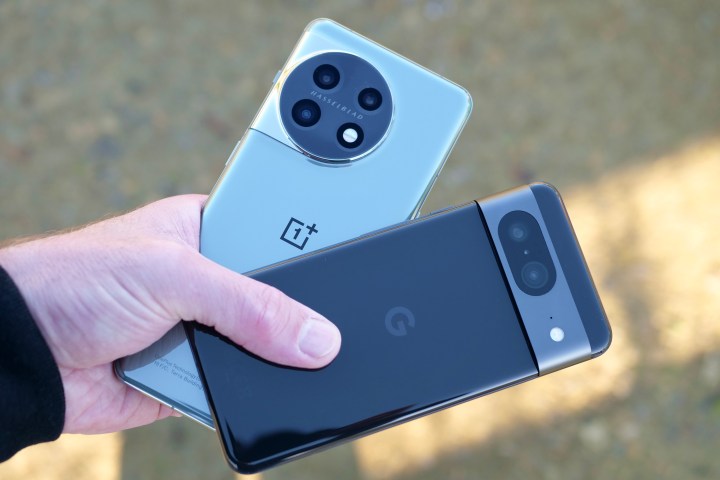
At the beginning of the year, OnePlus launched the OnePlus 11 with its Hasselblad-tuned camera. It impressed us at the time, but how does it compare to the brand new Google Pixel 8, released nearly nine months later? The two cost $700, so chances are, if you’re looking at one, the other has popped up in your searches too.
Our comparison answers the question of which camera is better — and also shows whether Google’s computational photography is always noticeably superior. The results may surprise you in one key category.
OnePlus 11 vs. Pixel 8: camera specs

There are three cameras on the back of the OnePlus 11, starting out with the 50-megapixel main camera, equipped with optical and electronic stabilization, and then joined by a 48MP wide-angle camera and a 32MP Portrait Telephoto camera. The telephoto works when taking portrait shots, but there is still a 2x option in the camera app. On the front is a 16MP selfie camera with electronic image stabilization.
The Google Pixel 8 only has two cameras on the back, with the array consisting of a 50MP main camera and a 12MP wide-angle camera. The Pixel 8 has optical and electronic stabilization on the main camera, and both phones use a spectral sensor to improve color accuracy. Behind the hardware is Google’s software and algorithms enhancing the photos, while OnePlus has worked with Hasselblad to tune aspects of the camera. The Pixel 8 has a 10.5MP selfie camera.
All the photos were taken in automatic mode on several different days and in different weather conditions and then examined on a color-calibrated monitor. The final images have been resized here for easier viewing online.
OnePlus 11 vs. Pixel 8: main camera
- 1. OnePlus 11
- 2. Google Pixel 8
The first photo we’re going to look at shows off the traits that will continue to define the images in this section. The OnePlus 11 boosts the colors and contrast and sets a brighter exposure level, while the Pixel 8 tones the photo down with more natural colors and better overall balance. The Pixel 8 also has a much stronger depth of field, which can be very attractive but can also affect the sharpness of the complete image.
- 1. OnePlus 11
- 2. Google Pixel 8
Next, you can see how HDR sets the two apart, with the OnePlus 11 going for a far brighter, much more colorful image, but at the expense of the clouds and sky. It’s blown out in several spots, where the Pixel 8 has again used a more natural balance to show the scene as it was at the time. Because of the heavy-handed approach, the OnePlus 11’s photo struggles with detail, especially in the tree top in the top left of the photo.
- 1. OnePlus 11
- 2. Google Pixel 8
In the photo of the muffin, both cameras have great focus and depth of field, but the Pixel 8’s skin tone is more accurate. I’m pasty, but not quite as pasty as the OnePlus 11 makes out. The color of the muffin is also more realistic in the Pixel 8’s photo, and when you crop the image down, it’s slightly sharper, too.
- 1. OnePlus 11
- 2. Google Pixel 8
I used tap-to-focus to force the camera to look at the Cayman script, and the level of detail captured in both looks excellent. The picture highlights again the difference in color, tone, saturation, and exposure. The Pixel 8’s photo is much more realistic and representative of the car’s color, plus the glass isn’t as overexposed as the OnePlus 11’s photo.
- 1. OnePlus 11
- 2. Google Pixel 8
All this doesn’t always work in the Pixel 8’s favor, as this photo of the leaf shows. The lovely autumnal colors are beautifully realized by the OnePlus 11, and I don’t care that the path underneath is entirely the wrong color; it just looks far more attractive and representative of the day than the Pixel 8’s more clinically accurate coloring.
The Pixel 8’s realism and balance shine through in each photo, while the OnePlus 11’s exuberance and keenness to take a really bright and colorful photo has an appeal of its own. Google’s camera takes sharper photos, but it may only be possible to spot when you have the two side-by-side or often crop them down. However, while I like the atmospheric shots the OnePlus 11 can take, the Pixel 8’s wonderfully natural tone wins out — but it’s really close.
Winner: Google Pixel 8
OnePlus 11 vs. Pixel 8: wide-angle camera
- 1. OnePlus 11
- 2. Google Pixel 8
Neither wide-angle camera is great, but the Pixel 8 manages to extract a lot more detail through its sharper, more natural-looking photos. In the first photo, the same traits that make the OnePlus 11’s main camera such an eye-catcher remain, with bright, saturated colors giving a vibrant look to the image. However, while the Pixel 8 tones things down a little, there’s more detail in the photo, especially when you crop it down.
- 1. OnePlus 11
- 2. Google Pixel 8
It’s hard not to love the OnePlus 11’s colorful wide-angle photos, though, and they’re usually more lively than the Pixel 8’s wide-angle images. The blue sky is more noisy in the Pixel 8’s photo, and there’s more noticeable smoothing in some places. Both have positive and negative aspects, and neither really takes great wide-angle images, but it has to be a draw. If the OnePlus 11’s details weren’t often lost in its wide-angle images compared to the Pixel 8, it would have won.
Winner: Draw
OnePlus 11 vs. Pixel 8: 2x zoom
- 1. OnePlus 11
- 2. Google Pixel 8
OnePlus calls the 2x an optical zoom, while the Pixel 8’s 2x zoom is technically optical quality, as it crops the main sensor’s image. But the pixel count tells the whole story, as a 2x OnePlus 11 shot is 3136 x 2352, while the Pixel 8’s 2x photos are 4080 x 3072 pixels.
The first photo of the church clock shows the effect of the higher pixel count and Google’s software on this type of photo. The OnePlus 11 has obvious edge enhancement and blur down the side of the building, but this is missing entirely from the sharp Pixel 8’s photo. This sharpness continues on the brickwork, the clock face, and even the trees.
- 1. OnePlus 11
- 2. Google Pixel 8
The Pixel 8 doesn’t always produce great 2x photos, though, as the second image shows. The washed-out image doesn’t have the pop of the OnePlus 11’s photo, but the level of detail in each is similar. The sun was low in the sky, which seemed to negatively affect the Pixel 8’s photo.
- 1. OnePlus 11
- 2. Google Pixel 8
However, the Pixel 8’s greater pixel count wins over most of the time, as you can see in this complex image. There’s a lot of blur as the leaves are smudged together in the OnePlus 11’s photo, but they are more defined in the Pixel 8’s image. The sharpness means the cool, sunny day’s atmosphere is more accurately portrayed by the Pixel 8. Like the wide-angle camera, neither phone takes brilliant images, but the Pixel 8 definitely improves on the OnePlus 11.
Winner: Google Pixel 8
OnePlus 11 vs. Pixel 8: night mode
- 1. OnePlus 11
- 2. Google Pixel 8
The Pixel series has always had a reputation for amazing lowlight photos, and while the Pixel 8’s white balance is immediately superior to the OnePlus 11, it doesn’t streak ahead elsewhere as you may expect. When you crop into the first photo, the signs on the door and windows are slightly sharper in the Pixel 8’s photo, but the OnePlus’s image is crisp and sharp, whereas the Pixel 8 blurs detail out.
- 1. OnePlus 11
- 2. Google Pixel 8
The second photo is a surprise, as it was totally black, apart from the one light illuminating the church in the distance. Everything in the periphery was invisible to the naked eye, and while neither photo is good, the OnePlus 11 definitely coped with the environment better than the Pixel 8. The OnePlus 11 took the more stable, less blurry, less noisy, less smudgy photo — and proves again that just because a night mode photo is brighter, doesn’t make it better.
- 1. OnePlus 11
- 2. Google Pixel 8
Deciding this round is tough, but look at the background in our final image. The OnePlus 11 better exposes the roof and telegraph pole, and the brighter sections are just as sharp as the Pixel 8’s photo. The OnePlus 11 is definitely more comfortable taking photos in very dark environments without coming across as artificially boosting the exposure to unrealistic levels.
Winner: OnePlus 11
OnePlus 11 vs. Pixel 8: selfie camera
I didn’t like the performance of either selfie camera. The Pixel 8’s edge recognition in portrait mode is unreliable, and the images lack detail, but it can capture some lovely colors. The OnePlus 11’s selfies can be horribly over-exposed, and the contrast levels ruin skin tone. It doesn’t do edge recognition much better than the Pixel 8, either. It’s disappointing the OnePlus 11 and Pixel 8 don’t put much emphasis on front camera performance.
Winner: Draw
The Google Pixel 8 wins, but only just

The Google Pixel 8 wins the comparison battle with two wins compared to the OnePlus 11’s single win, but two categories also ended up in a draw, so it was surprisingly close overall. The OnePlus 11’s win in the night mode section came as a shock, showing the Pixel 8 reputation isn’t always deserved and doesn’t always make it the default best option for low-light photography. Google’s software makes the editing process far more interesting, but that’s where the advancements made over the past year can be found, rather than in the main camera’s photos.
If you’re interested in buying either of these phones, it’s worth noting both prioritize the main camera and disappoint with lackluster performance from the wide-angle, zoom, and selfie cameras. If you want more color and a greater HDR boost, the OnePlus 11 will probably be the better choice. The Pixel 8’s magic happens when you’ve taken the photo, and you can experiment with Magic Editor and Magic Eraser.
Before deciding, make sure to read our in-depth reviews of the OnePlus 11 and Pixel 8 first and see how I felt about the OnePlus phone when I returned to it recently. It’s also fun to look back at how the Google Pixel 7 compared to the OnePlus 11 in a camera test and see how the software and hardware performance have altered since February 2023.




